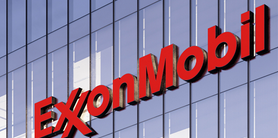The Financial Statements Comparison Between Exxon Mobil Corporation and Chevron Corporation
The Financial Statements Comparison Between Exxon Mobil Corporation and Chevron Corporation
Zhaojun Luo
University of Illinois Urbana-Champaign, Champaign-IL-61820, USA
zl113@illinois.edu
Abstract. The study embarked upon a comprehensive financial analysis of Exxon Mobil and Chevron, aiming to discern their fiscal health from 2023 onwards. The Exxon Mobil and Chevron are the two leading companies of energy industry. Central to this essay is answering: ‘How are these energy giants faring in today’s dynamic energy industry?” To address this question, this article will utilize the financial data from 2023 Wall Street Journal as our main source and employed five prominent financial ratios as our methodology framework: profitability, liquidity, activity cash-flow, and debt ratios. These ratios, measured over an eighteen-month sample period, offered in-sight into both companies’ financial trajectories. The article findings suggest-ed that both companies show a very great and stable financial performance. However, with the development of energy, both two company will face a dynamic yet challenging fiscal environment for both entities; furthermore, this research not only filled knowledge gaps but provided stakeholders with tactical recommendations in an unpredictable market.
Keywords: Financial statements, ratio analysis, Exxon Mobil Corporation, Chevron Corporation
1 Introduction
In modern society, the energy industry has emerged as an indispensable compo-nent of our daily lives. As the world continues to progress, the significance of this industry has grown in prominence. The energy industry’s impact extends beyond the boundary of our daily lives, permeating various aspects of the world, such as the economy and the environment. Therefore, this article selects two of the world’s largest energy companies for analysis to highlight the influence made by the energy industry.
Exxon Mobil Corporation is one of America’s leading corporations in the energy industry, with a long history spanning over a century. Similarly, Chevron Corporation has made significant achievements in the energy industry as another major American corporation.
This essay will analyze the financial performance of these two leading companies using the information provided by the official website 2023. This article will use ratio analysis as the primary analytical method. A business environment analysis will also be conducted to have a better understanding. Finally, this article will give a prediction of the future performance of this company.
The rest of the paper will be structured as follows: Section 2 will discuss the method and sample selected for this research. Section 3 will analyze these two companies using ratios and business environment analyses.
2 Method and Sample
2.1 Method
With the shock brought by COVID-19 to the world, the prospects of the energy industry become unpredictable. In this situation, the ratio analysis provides a concrete means to analyze a company’s financial health, potential growth, and overall sustainability in the future.
In ratio analysis, several essential categories must be analyzed.
Profitability ratios. This evaluates the company’s ability to generate profits relative to its revenue, assets, or equity. This essay will use Return of Assets, Return of Equity, and some other standards to analyze. Students from Abu Dhabi University uses these ratios to analyze the profitability of Tesla. [1]
Liquidity ratios. This evaluates the company’s ability to meet its short-term obligations. In other words, it indicates whether a company has enough liquid assets to cover its short-term debt. The current ratio, quick ratio and cash ratio will be the two main ratios to analyze. The essay called ‘liquidity analysis of a company’, written by Savchuk showed these three ratios can be used to analyze the liquidity.[2]
Business Environment analysis. This analysis showed a broader industry perspective. The PESTLE method will be used as the main analysis for Business Environment. They were giving decision-makers an entirely different perspective. Athanasios Kolios proved in his paper ‘A political, economic, social, technology, legal and environmental (PESTLE) approach for risk identification of the tidal industry in the United Kingdom’ that PESTLE analysis can be used to analyze Business environment. [3]
The methods introduced above will be analyzed in detail in the third part and combined with ExxonMobil Corporation and Chevron Corporation’s annual fi-nancial reports and other information.
2.2 Sample.
The financial data of these two companies was collected from the 2023 WSJ website. This analysis also selected the official websites for the non-financial information these two companies provided.
3 Analysis & Result
3.1 Introduction of companies
This article will analyze the two companies Exxon
Mobil Corporation and Chevron Corporation.
Exxon Mobil is an American oil giant with roots tracing back to John D. Rockefeller’s Standard Oil. It’s one of the world’s top energy firms, known for its business prowess and environmental controversies. [4]
Chevron is an American energy heavyweight originating from the California oil rush in the 19th century. Today, it is one of the world’s top oil companies, balancing its vast operations with complex environmental and geopolitical challenges. [5]
3.2 Ratio Analysis
The analysis technique used in this part is the ratio analysis introduced above. The study will be carried out on Profitability, Liquidity, and Capital structure.
Profitability.
Table 1. Profitability ratios for Exxon Mobil and Chevron
Exxon Mobil Corporation Chevron Corporation
Net margin 13.92% 15.00%
Return of Assets 15.75% 14.26%
Return of Equity 30.66% 23.77%
Net Margin.
Exxon Mobil Corporation. According to Table 1, ExxonMobil has an overall Net Margin of 13.92 and represents an increase of +3.92% after accounting for expenses such as taxes, thus retaining $0.1392 of every dollar of sales as net profit after accounting for costs such as those made up in this calculation. A higher margin indicates an efficient use of sales turnover into actual profit generation for Exxon Mobil. [6]
Chevron Corporation. According to Table 1, Chevron Corporation has recently achieved a net margin of +15.00%. This ratio offers insight into their financial health. By deducting operating expenses, interest payments, taxes and any other related expenditures, they retain $0.15 of every dollar earned as revenue – an outstanding figure which indicates efficient expense control combined with ef-fective operations that retain significant assets within an advantageous market environment. Keep an eye out – that 15% Net Margin means this company is holding onto significant chunks of their revenues rather than losing them! [7]
Return on Assets (ROA).
Exxon Mobil Corporation. The Return of Assets for Exxon Mobil is 15.75%. At 15.75%, the ROA indicates that the company is generating a return of $0.1575 for every dollar of assets it. This ratio is very important because assets are significant investments for all company, and a corporation’s ability to extract holds Profits from its assets means operational efficiency. The ROA here is strong, suggesting the company is good at using its assets to generate earnings. [6]
Chevron Corporation. The recent ROA of Chevron is 14.26% according to the Table 1. This ratio is important, showing about the efficiency with which a company is earing profit from its assets. For this company, it’s managing to earn $0.1426 for every dollar’s worth of assets it owns. This showcases that the assets are not just normal investments but active contributors to the company’s profit machinery. [7]
Return on Equity (ROE).
Exxon Mobil Corporation. The ROE stands at an impressive 30.66% based on Table 1. This ratio notices how well a company’s management is using shareholders’ equity to generate profits. A higher ROE often means effective management and a good return to shareholders. The provided ROE suggests that for every dol-lar of shareholder equity, the company generated a return of $0.3066 over the period. This high ROE might be attributed to strong management, a competitive advantage. [6]
Chevron Corporation. With an ROE of 23.77% according to Table 1, we’re looking at a company that knows how to reward its shareholders. It shows how impressive the management team is arranging shareholders’ equity to generate prof-its. In simple terms, for every dollar of shareholder’s equity, the firm earned a return of $0.2377. Such a strong ROE is often very attractive to potential investors, pointing towards proficient management or strategic advantages in play. [7]
Both of Exxon Mobil and Chevron showed a great financial health. However, the Exxon Mobil lead ahead in terms of asset and equity utilization. Conversely, the Chevron, while slightly worse in ROA and ROE than Exxon Mobil, is more efficient at turning sales into net profit.
Liquidity.
Table 2. Liquidity ratio for Exxon Mobil and Chevron
Exxon Mobil Corporation Chevron Corporation
Current Ratio 1.41 1.47
Quick Ratio 1.06 1.23
Cash Ratio 0.43 0.54
Current Ratio.
Exxon Mobil Corporation. The current ratio of 1.41 based on the data from Table 2. It indicates that the company has $1.41 of current assets for every dollar of current liabilities. A ratio above 1 suggests that the company has more assets than liabilities, which is typically seen as a sign of good short-term financial health. However, this doesn’t always mean the company is in a comfortable position. Ideally, this ratio should be compared with competitors to determine the company’s position in the market. Nevertheless, a ratio of 1.41 is generally seen as a positive sign, indicating the company can cover its short-term obligations. [6]
Chevron Corporation. Their Current Ratio is 1.47, meaning for every dollar of current liabilities, they hold $1.47 in current assets – this indicates a strong sign that Chevron should have enough resources available to it to meet short-term financial commitments like immediate debt payments and financial responsibilities in an effective and timely fashion. [7]
Quick Ratio.
Exxon Mobil Corporation. Widely known as an acid test ratio, the quick ratio provides an alternative measure of liquidity by excluding inventories from cur-rent assets. Table 2 shows the quick ratio of Exxon Mobil is 1.06. A quick ratio of 1.06 indicates a company has approximately $1.06 of liquid assets available against each $1 of current liabilities – further evidence that its short-term obligations will be managed. [6]
Chevron Corporation. Quick ratio stands at 1.23 according to Table 2, and it provides even more specific insight. By taking into account only liquid assets com-pared with liabilities, such as inventories that may take more time and energy to dispose of quickly, this ratio provides a clearer depiction of its financial health – one above one is generally believed to indicate good short-term stability; at 1.23 it shows more than enough readily accessible assets available for immediate ob-ligations to address its immediate liabilities, giving reassurance to creditors and investors of strong short-term stability of Chevron Corporation’s short-term sta-bility than ever before. [7]
Cash Ratio.
Exxon Mobil Corporation. The most conservative of the liquidity ratios, the cash ratio considers only cash and cash equivalents against current liabilities. A cash ratio of 0.43, according to the Table 2. It means that the company has $0.43 in cash and cash equivalents for every dollar of current liability. Though this might seem low, it’s essential to remember that businesses operate with various other current assets, not just cash. A higher cash ratio is often more convincing for investors and creditors as it denotes a greater capacity to pay off short-term obligations using only cash and cash equivalents. [6]
Chevron Corporation. The Cash Ratio comes in at 0.54 based on Table 2. This tight ratio exclusively considers the company’s cash and cash equivalents in rela-tion to its current liabilities. While 0.54 may suggest that the company doesn’t have enough cash on hand to immediately cover all its current liabilities, it’s not necessarily a cause for alarm. Companies often have multiple avenues for ad-dressing short-term debts beyond just their cash reserves. However, a higher cash ratio would offer additional protection, indicating a greater capability to manage short-term financial challenges using only the most liquid of assets. [7]
In conclusion, Exxon Mobil’s Current Ratio of 1.41 suggests it has $1.41 in cur-rent assets for every dollar in current liabilities. Though this is relatively healthy, Chevron holds a better position at Current Ratio of 1.47. This leading continues in the Quick Ratio, where assets are more liquid – Chevron leads again at 1.23 compared to Exxon Mobil’s 1.06. In the context of the most liquid assets, represented by the Cash Ratio, Chevron maintains its leading with a ratio of 0.54 over ExxonMobil’s 0.43. Though both companies maintain a relatively stable liquidity position, Chevron exhibits a stronger performance against short-term obligations.
3.3 Business Environment Analysis
The article will next analyze the Business environment to gain a more comprehensive understanding of the situation of different companies in the market. PESTLE will be used as the main method. The six parts of Political, Economic, Social, Technological, Legal, and Environmental make up PESTLE. [8]
Political. Both Chevron and Exxon Mobil operate in a lot of countries, exposing them to diverse political environments. While Chevron faces challenges associated with political stability, corruption levels, and bureaucracy in the Major Integrated Oil & Gas sector, Exxon Mobil grapples with trade restrictions, policy changes, and geopolitical ties, especially in India. [9]
Economic. Global economic conditions, such as inflation, recession, exchange rates, and macroeconomic policies, will affect both Chevron and Exxon Mobil. Chevron must consider factors like infrastructure quality and the economic system in countries of operation. Meanwhile, Exxon Mobil’s profitability swings with global demand-supply dynamics, economic growth rates, and competition from renewable energy sources. [3]
Social. Societal values and consumer behavior play significant roles for both corporations. Chevron needs to understand shared beliefs and attitudes, particularly towards “green” initiatives. Exxon Mobil must consider the changing demographics influencing consumption patterns and preferences, given the rise of alternative energy sources. [10]
Technological. Technological disruptions are the most important part for the oil and gas industry. Chevron should be alert to technological advancements by competitors and the rate of technological diffusion. ExxonMobil faces challenges and opportunities from emerging technologies, especially as consumers shift towards e-transportation and alternate energy sources, mandating consistent re-search and development efforts.
Legal. Both companies need to navigate varying legal landscapes across countries. For Chevron, concerns range from intellectual property rights to data protection. Exxon Mobil has to deal with country-specific energy market regulations, from environmental laws to trade restrictions and foreign direct investment guidelines. Adherence to these diverse legal frameworks ensures smooth operations and reduces litigation risks.
Environmental. Environmental consciousness is reshaping the energy sector. Chevron needs to heed regulations concerning pollution, waste management, and attitudes towards renewable energy. Simultaneously, Exxon Mobil, amidst rising global environmental concerns, is focusing on R&D for environment-friendly products, such as algae-based biofuels and carbon capture techniques.
4 Prediction
Exxon Mobil and Chevron, two of the world’s premier energy companies, display significant financial health and stability according to an in-depth 2023 analysis conducted on them. Exxon Mobil leads in capital utilization with superior asset and equity utilization; Chevron proves itself more liquid due to superior short-term financial fortitude; yet both entities face numerous external business environment-based obstacles and challenges. While their global footprints expose them to various political dynamics, shifting global economic conditions and growing renewable energy demands present profitability hurdles for these multi-national firms. Technological disruption, particularly the rise of e-transportation, requires ongoing innovation while legal landscapes entail complex regulatory navigation. But perhaps most pressing of all is environmental considerations as society demands cleaner energy options with reduced carbon footprints, forcing both giants to adapt and innovate to stay relevant in an ever-evolving energy ecosystem.
5 Conclusion
As part of its comprehensive examination of the energy industry’s impact in modern times, this article engages in an in-depth examination of two giant industry players – Exxon Mobil Corporation and Chevron Corporation – which have considerable sway on shaping its development. Ratio analysis was employed in order to gauge their financial health using official 2023 reports as the source.
Key findings reveal that, while Exxon Mobil holds an edge when it comes to capital utilization, Chevron appears more liquid when conducting financial dealings. A variety of ratios were utilized during this comparison process from profit-ability measures like Net Margin to liquidity indicators like Current Ratio for this analysis. An environmental analysis also highlighted the unique challenges each corporation must meet due to their global operations, from responding to political shifts or accommodating for technological disruptions, among many others. Both entities must constantly evolve. Environmental considerations, and particularly global sustainability initiatives, are altering the future of both companies’ industry. Based on available data and insight, both corporations demonstrate strong financial health and resilience despite an ever-evolving energy landscape; success for either corporation depends on being adaptable enough.
References
1. Almenhali, A., Alhajeri, H., Almansoori, H., Aljneibi, N., Almansoori, N., Alsulaity, N., … & Nobanee, H. (2021). Financial Analysis of Tesla. Available at SSRN 3896901.
2. Savchuk, O. (2014). Liquidity Analysis of a Company (Doctoral dissertation).
3. Kolios, A., & Read, G. (2013). A political, economic, social, technology, legal and en-vironmental (PESTLE) approach for risk identification of the tidal industry in the Unit-ed Kingdom. Energies, 6(10), 5023-5045.
4. ExxonMobil. In: (2023) Wikipedia. https://en.wikipedia.org/wiki/ExxonMobil. Ac-cessed 16 Sep 2023
5. Chevron Corporation. In: (2023a) Wikipedia. https://en.wikipedia.org/wiki/Chevron_Corporation. Accessed 16 Sep 2023
6. The Wall Street Journal. (n.d.). Xom | Exxon Mobil Corp.. stock price & news – WSJ. https://www.wsj.com/market-data/quotes/XOM
7. The Wall Street Journal. (n.d.-b). https://www.wsj.com/market-data/quotes/CVX/financials
8. Sayeed T Swot & Pestle Analysis of Chevron. In: LinkedIn. https://www.linkedin.com/pulse/swot-pestle-analysis-chevron-tasneem-sayeed. Ac-cessed 16 Sep 2023
9. Team, M. S. (2021, April 4). ExxonMobil pestle analysis – detailed pestle factors. https://www.mbaskool.com/pestle-analysis/companies/18227-exxonmobil.html
10. Social. Exxon Mobil Corporation. (n.d.). https://investor.exxonmobil.com/esg/social





